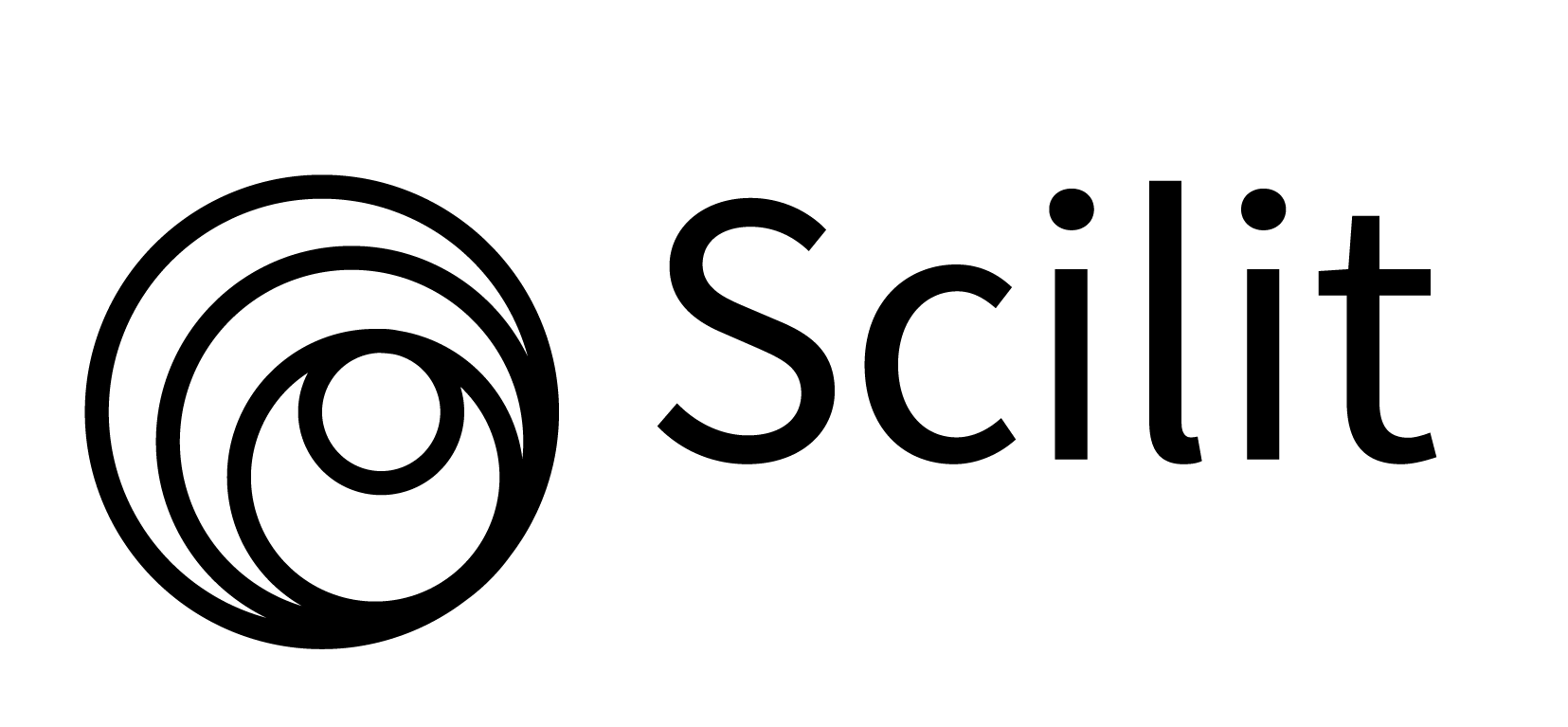Review Article
Seeing Beyond the Human Eye: AI's Role in Medical and Dental Imaging
- Dr. Patrik Kennet
Corresponding author: Patrik Kennet, Massachusetts Institute of Technology, Massachusetts Ave, Cambridge, MA 02139, United States.
Volume: 2
Issue: 1
Article Information
Article Type : Review Article
Citation : Patrik Kennet, Soren Falkner. Seeing Beyond the Human Eye: AI's Role in Medical and Dental Imaging. Journal of Dentistry and Oral Health, 2(1). https://doi.org/10.61615/JDOH/2025/APRIL027140423
Copyright: © 2025 Patrik Kennet. This is an open-access article distributed under the terms of the Creative Commons Attribution License, which permits unrestricted use, distribution, and reproduction in any medium, provided the original author and source are credited.
DOI: https://doi.org/10.61615/JDOH/2025/APRIL027140423
Publication History
Received Date
07 Apr ,2025
Accepted Date
19 Apr ,2025
Published Date
23 Apr ,2025
Abstract
The integration of artificial intelligence (AI) is revolutionizing medical and dental imaging, enabling clinicians to "see beyond the human eye." This paper explores the transformative impact of AI on diagnostic accuracy and efficiency. By leveraging deep learning algorithms, AI can analyze complex imaging data, such as X-rays, CT scans, and MRIs, to detect subtle abnormalities and patterns that may be missed by human observers. This leads to earlier and more precise diagnoses of various conditions, including cancers, periodontal disease, and other pathologies. Furthermore, AI automates image analysis workflows, reducing the time required for interpretation and improving overall efficiency. We discuss the current applications of AI in medical and dental imaging, highlighting its potential to enhance personalized treatment planning and improve patient outcomes. Finally, we address the challenges and future directions of AI in this field, including ethical considerations and the need for robust validation studies.
Keywords: Artificial intelligence (AI), medical imaging, dental imaging, deep learning, diagnostics, X-ray, CT scan, MRI, image analysis, personalized medicine, healthcare technology.
►Seeing Beyond the Human Eye: AI's Role in Medical and Dental Imaging
Patrik Kennet1*, Soren Falkner2
1Massachusetts Institute of Technology, Massachusetts Ave, Cambridge, MA 02139, United States.
2Vienna University of Technology, Faculty of Computer Engineering, Vienna, Austria.
Introduction
The realm of medical and dental imaging has long served as a cornerstone of diagnostic and treatment planning processes. From the early days of radiography to the sophisticated multi-planar reconstructions of modern computed tomography (CT) and magnetic resonance imaging (MRI), the ability to visualize internal structures has fundamentally transformed healthcare. However, the interpretation of these complex images remains a human-dependent process, subject to inherent limitations such as fatigue, subjective bias, and the sheer volume of data. In recent years, the advent of artificial intelligence (AI) [1-23], particularly deep learning, has ushered in a paradigm shift, promising to "see beyond the human eye" and unlock unprecedented levels of diagnostic accuracy and efficiency. This introduction delves into the transformative potential of AI in medical and dental imaging, exploring its current applications, benefits, and the challenges that lie ahead.
The human eye, while remarkable, is constrained by its inherent limitations. Subtle variations in tissue density, minute anatomical anomalies, and the sheer complexity of multi-dimensional imaging data can easily escape visual detection. AI, especially through deep learning architectures like convolutional neural networks (CNNs), excels at pattern recognition, enabling it to identify intricate features and subtle abnormalities that may be imperceptible to human observers. By training these algorithms on vast datasets of annotated medical and dental images, AI systems can learn to recognize patterns associated with specific pathologies, effectively acting as a highly sensitive and objective "second reader." This capability is particularly critical in areas like oncology, where early detection of subtle tumor characteristics can significantly impact patient outcomes.
In medical imaging, AI is being deployed across a wide spectrum of applications. From automated lung nodule detection in chest CT scans to the segmentation of brain tumors in MRI, AI algorithms are demonstrating remarkable accuracy and efficiency. In radiology, AI-powered tools are streamlining workflows, reducing the time required for image interpretation, and improving the consistency of diagnostic reporting. Similarly, in dentistry, AI is revolutionizing the analysis of dental radiographs, facilitating the early detection of caries, periodontal bone loss, and even oral cancer. The ability to analyze panoramic radiographs and cone-beam CT scans with unprecedented precision enables dentists to develop more accurate treatment plans and provide more personalized care.
The benefits of AI in medical and dental imaging extend beyond improved diagnostic accuracy. By automating routine image analysis tasks, AI can free up clinicians to focus on more complex aspects of patient care, such as treatment planning and patient communication. This efficiency gain is particularly crucial in resource-constrained settings, where access to specialized radiologists and dentists may be limited. Furthermore, AI can contribute to the development of personalized medicine by integrating imaging data with other clinical and genetic information, enabling the tailoring of treatment strategies to individual patient characteristics.
However, the integration of AI [24-35] into medical and dental imaging is not without its challenges. One critical concern is the need for robust validation studies to ensure the reliability and generalizability of AI algorithms across diverse patient populations. Algorithmic bias, arising from the use of biased training datasets, can lead to disparities in diagnostic accuracy across different demographic groups. Addressing this issue requires careful curation of training data and rigorous evaluation of AI models on diverse datasets. Furthermore, the ethical implications of AI in healthcare, including data privacy and the potential for job displacement, must be carefully considered.
The future of medical and dental imaging is inextricably linked to the continued advancement of AI. As deep learning algorithms become more sophisticated and computational power increases, we can expect to see even more transformative applications of AI in this field. The development of AI-powered tools for real-time image analysis during surgical procedures, the integration of AI into point-of-care imaging devices, and the use of AI to predict treatment response based on imaging features are just a few examples of the exciting possibilities that lie ahead. By embracing the potential of AI [36-50] while addressing its challenges, we can unlock a new era of precision and efficiency in medical and dental imaging, ultimately leading to improved patient outcomes and a more equitable healthcare system.
Challenges
While the potential of AI to revolutionize medical and dental imaging is undeniable, its widespread and successful implementation faces several significant challenges. These hurdles span technical, ethical, and practical domains, requiring careful consideration and proactive solutions to ensure responsible and effective integration.
1. Data Quality and Availability
- Data Scarcity: Training robust AI models, particularly deep learning algorithms, necessitates vast amounts of high-quality, annotated imaging data. In many medical and dental specialties, such large, curated datasets are scarce.
- Data Heterogeneity: Imaging data varies significantly across different institutions, scanners, and patient populations. This heterogeneity can hinder the generalizability of AI models trained on specific datasets.
- Data Annotation: Accurate and consistent annotation of medical and dental images is a time-consuming and resource-intensive process [51-62]. The quality of AI model performance is directly dependent on the accuracy of these annotations.
- Data Privacy and Security: Medical and dental images contain sensitive patient information, raising concerns about data privacy and security. Stringent data protection measures are essential to ensure compliance with regulations like HIPAA and GDPR.
2. Algorithmic Bias and Generalizability
- Bias in Training Data: AI models can inherit biases present in their training data, leading to disparities in diagnostic accuracy across different demographic groups. For example, a model trained primarily on images from Caucasian patients may perform poorly on images from patients of other ethnicities.
- Lack of Generalizability: AI models trained on data from a specific institution or scanner may not generalize well to data from other sources. This limits the applicability of these models in diverse clinical settings.
- "Black Box" Problem: Deep learning models can be complex and opaque, making it difficult to understand how they arrive at their decisions. This lack of transparency can hinder trust and acceptance among clinicians.
3. Clinical Integration and Workflow
- Integration with Existing Systems: Seamless integration of AI tools into existing clinical workflows and electronic health record (EHR) systems is crucial for efficient implementation.
- Clinician Acceptance and Trust: Clinicians may be hesitant to adopt AI tools due to concerns about accuracy, reliability, and the potential for job displacement. Building trust and demonstrating the value of AI through rigorous validation studies are essential.
- Lack of Standardization: The absence of standardized protocols and guidelines for the development and validation of AI algorithms can hinder their widespread adoption.
- Regulatory Hurdles: Navigating the complex regulatory landscape for AI-powered medical and dental devices can be challenging, requiring clear guidelines and streamlined approval processes.
4. Ethical and Legal Considerations
- Liability and Accountability: Determining liability in cases where AI-powered tools make diagnostic errors is a complex legal issue.
- Informed Consent: Obtaining informed consent from patients regarding the use of AI in their care is essential.
- Algorithmic Transparency and Explainability: The "black box" nature of some AI models raises ethical concerns about transparency and accountability.
- Potential for Job Displacement: The automation of tasks performed by radiologists and dentists raises concerns about the potential for job displacement.
5. Technical and Infrastructure Challenges
- Computational Resources: Training and deploying deep learning models require significant computational resources, including high-performance computing infrastructure and specialized hardware.
- Software and Hardware Compatibility: Ensuring compatibility between AI software and existing imaging equipment and software systems can be challenging.
- Maintenance and Updates: AI models require ongoing maintenance and updates to ensure optimal performance and adapt to evolving clinical needs.
- Cybersecurity: Medical and dental imaging systems [63-80] are vulnerable to cyberattacks, which can compromise patient data and disrupt clinical workflows.
Benefits of AI in Medical and Dental Imaging
The integration of artificial intelligence (AI) into medical and dental imaging offers a multitude of benefits, promising to revolutionize diagnostic accuracy, streamline workflows, and ultimately improve patient outcomes. Here's a comprehensive overview of the key advantages:
1. Enhanced Diagnostic Accuracy and Precision
- Improved Detection of Subtle Abnormalities: AI algorithms [81-90], particularly deep learning models, can detect subtle patterns and anomalies in medical and dental images that may be missed by the human eye. This leads to earlier and more accurate diagnoses of various conditions, including cancers, periodontal disease, and other pathologies.
- Reduced Inter-Observer Variability: AI provides objective and consistent image analysis, minimizing the variability in interpretations between different clinicians.
- Quantitative Analysis: AI can perform precise quantitative analysis of imaging data, such as tumor volume measurement and bone density assessment, providing valuable insights for treatment planning and monitoring.
- Early Disease Detection: AI's ability to identify subtle changes in imaging data enables earlier detection of diseases, leading to more timely interventions and improved patient outcomes.
2. Increased Efficiency and Productivity
- Automated Image Analysis: AI can automate routine image analysis tasks, such as segmentation and lesion detection, freeing up clinicians to focus on more complex aspects of patient care.
- Faster Image Interpretation: AI can significantly reduce the time required for image interpretation, leading to faster turnaround times for diagnostic reports.
- Improved Workflow Efficiency: AI-powered tools can streamline workflows by automating tasks such as image triage and report generation.
- Reduced Workload for Clinicians: By automating repetitive tasks, AI can reduce the workload for radiologists and dentists, allowing them to focus on more complex cases and patient interactions.
3. Personalized Medicine and Treatment Planning
- Tailored Treatment Plans: AI can integrate imaging data with other clinical and genetic information to create personalized treatment plans based on individual patient characteristics.
- Predictive Analytics: AI can predict treatment response based on imaging features, enabling clinicians to select the most effective treatment strategies.
- Improved Treatment Monitoring: AI can monitor treatment response over time by analyzing serial imaging studies, allowing for timely adjustments to treatment plans.
- Enhanced Surgical Planning: AI can assist in surgical planning by providing precise anatomical measurements and 3D reconstructions of anatomical structures.
4. Improved Patient Outcomes and Safety
- Earlier Diagnosis and Treatment: Earlier detection of diseases through AI-powered diagnostics can lead to more timely interventions and improved patient survival rates.
- Reduced Diagnostic Errors: AI's ability to provide objective and consistent image analysis can reduce the risk of diagnostic errors.
- Minimally Invasive Procedures: AI-powered tools can assist in minimally invasive surgical procedures, leading to faster recovery times and reduced complications.
- Enhanced Patient Communication: AI-powered tools can facilitate patient education and communication by providing visual representations of anatomical structures and pathological findings.
5. Cost-Effectiveness
- Reduced Healthcare Costs: By improving diagnostic accuracy and efficiency, AI can reduce the need for unnecessary follow-up tests and procedures, leading to cost savings.
- Improved Resource Utilization: AI can optimize the use of imaging resources by prioritizing cases based on urgency and complexity.
- Increased Productivity: By automating routine tasks, AI can increase the productivity of clinicians and imaging departments.
6. Enhanced Research and Education
- Data Mining and Analysis: AI can analyze vast datasets of medical and dental images to identify new patterns and insights, leading to advancements in research and clinical practice.
- Educational Tools: AI-powered [91-103] tools can be used to create interactive educational materials for medical and dental students and residents.
- Improved Clinical Decision Support: AI can provide clinicians with real-time clinical decision support based on imaging findings.
- Future Works: Advancing AI in Medical and Dental Imaging.
The field of AI in medical and dental imaging is rapidly evolving, with numerous avenues for future research and development. Here's a look at some promising directions:
1. Enhanced AI Models and Algorithms
- Development of More Robust and Generalizable Models: Future research should focus on developing AI models that can generalize well across diverse patient populations, imaging modalities, and clinical settings. This includes addressing algorithmic bias and improving model robustness to variations in data quality.
- Integration of Multi-Modal Data: Combining imaging data with other clinical information, such as genetic data, electronic health records (EHRs), and patient demographics, can lead to more comprehensive and personalized diagnoses and treatment plans.
- Explainable AI (XAI): Developing AI models that can provide transparent and interpretable explanations for their decisions is crucial for building trust and facilitating clinical adoption. XAI techniques can help clinicians understand how AI arrives at its conclusions.
- Federated Learning: This approach allows AI models to be trained on decentralized data without sharing sensitive patient information, addressing data privacy concerns and enabling collaboration across multiple institutions.
- Development of AI for Rare Diseases: AI can be used to analyze imaging data from patients with rare diseases, which often have limited data availability. This can lead to improved diagnosis and treatment of these conditions.
2. Real-Time and Intraoperative AI
- Real-Time Image Analysis: Developing AI-powered tools for real-time image analysis during surgical procedures can provide surgeons with immediate feedback and guidance, improving precision and safety.
- Intraoperative AI Assistance: Integrating AI into intraoperative imaging systems can enable real-time detection of critical structures and anomalies, facilitating more accurate and efficient surgical interventions.
- AI-Guided Robotics: Combining AI with robotic surgery systems can enhance precision and automation, leading to improved surgical outcomes.
3. AI for Preventive and Predictive Imaging
- Predictive Modeling: AI can be used to develop predictive models that can identify individuals at high risk for developing certain diseases based on their imaging data.
- Preventive Imaging: AI can analyze imaging data to detect early signs of disease before symptoms appear, enabling preventive interventions and improving patient outcomes.
- Personalized Risk Assessment: AI can assess individual patient risk factors based on imaging data and other clinical information, enabling personalized preventive care.
4. AI for Point-of-Care Imaging
- AI-Powered Mobile Imaging: Developing AI-powered mobile imaging devices can make diagnostic imaging more accessible in resource-constrained settings and remote areas.
- AI Integration into Portable Ultrasound Devices: Integrating AI into portable ultrasound devices can enable real-time image analysis and interpretation at the point of care.
- AI for Telemedicine: AI can facilitate remote image interpretation and consultation, improving access to specialized care.
5. Standardization and Validation
- Development of Standardized Datasets: Creating standardized datasets for training and evaluating AI models is crucial for ensuring their reliability and generalizability.
- Establishment of Validation Frameworks: Developing robust validation frameworks for AI-powered imaging tools is essential for ensuring their safety and effectiveness.
- Regulatory Guidelines: Establishing clear regulatory guidelines for the development and deployment of AI in medical and dental imaging is crucial for ensuring responsible innovation.
6. Ethical and Societal Considerations
- Addressing Algorithmic Bias: Research is needed to develop methods for detecting and mitigating algorithmic bias in AI models.
- Data Privacy and Security: Developing robust data privacy and security measures is essential for protecting sensitive patient information.
- Clinician Training and Education: Developing educational programs to train clinicians in the use of AI-powered imaging tools is essential for ensuring their effective and responsible implementation.
- Public Engagement and Trust: Engaging the public in discussions about the ethical and societal implications of AI in healthcare is crucial for building trust and acceptance.
Conclusion
The integration of artificial intelligence (AI) into medical and dental imaging represents a paradigm shift, offering the potential to revolutionize diagnostic accuracy, streamline workflows, and ultimately, improve patient outcomes. By "seeing beyond the human eye," AI empowers clinicians with unprecedented insights, enabling earlier and more precise detection of pathologies, personalized treatment planning, and enhanced patient care.
The benefits are manifold, ranging from the ability to identify subtle abnormalities that escape human perception to the automation of routine image analysis tasks, freeing up clinicians to focus on complex cases and patient interactions. AI's capacity for quantitative analysis and predictive modeling further enhances its value, paving the way for personalized medicine and improved treatment monitoring.
However, the path to seamless AI integration is not without its challenges. Data quality and availability, algorithmic bias, clinical workflow integration, and ethical considerations demand careful attention. Robust validation studies, transparent AI models, and clear regulatory frameworks are essential for ensuring the safe and effective deployment of AI-powered imaging tools.
- Panahi, O. (2025). AI in Health Policy: Navigating Implementation and Ethical Considerations. Int J Health Policy Plann. 4(1): 01-05.
- Panahi, O. (2025). The Role of Artificial Intelligence in Shaping Future Health Planning. Int J Health Policy Plann. 4(1): 01-05.
- Panahi, O. (2025). Secure IoT for Healthcare. European Journal of Innovative Studiesand Sustainability. 1(1): 1-5.
- Omid P, Evil Farrokh E. (2025). Beyond the Scalpel: AI, Alternative Medicine, and the Future of Personalized Dental Care. J Complement Med Alt Healthcare. 13(2): 555860.
- Panahi, O, Farrokh, S. (2025). Ethical Considerations of AI in Implant Dentistry: A Clinical Perspective. J Clin Rev Case Rep. 10(2): 01-05.
- Dr Omid Panahi, Dr Ali Ezzati and DrMansourehZeynali. (2025). Will AI Replace Your Dentist? The Future of Dental Practice. OnJ Dent & Oral Health. 8(3): 1-7.
- Panahi O. (2025). Navigating the AI Landscape in Healthcare and Public Health. Mathews J Nurs. 7(1): 56.
- Dr Omid Panahi, Dr Faezeh Esmaili, Dr Sasan Kargarnezhad. (2024). Künstliche Intelligenz in der Zahnmedizin, Unser wissen Publishing. ISBN: 978-620-3-6722696.
- Dr Omid Panahi, Dr Faezeh Esmaili, Dr Sasan Kargarnezhad. (2024). Artificial Intelligence in Dentistry, Scholars Press Publishing. ISBN: 978-620-6772118.
- Dr Omid Panahi, Dr Faezeh Esmaili, Dr Sasan Kargarnezhad. (2024). Inteligencia artificial en odontología, NUESTRO CONOC, MENTO Publishing. ISBN: 978-620-6622764.
- Dr Omid Panahi, Dr Faezeh Esmaili, Dr Sasan Kargarnezhad. (2024). L'intelligence artificielle dans l'odontologie, EDITION NOTRE SAVOIR Publishing Publishing. ISBN: 978-620-6622771.
- Dr Omid Panahi, Dr Faezeh Esmaili, Dr Sasan Kargarnezhad. (2024). Intelligenza artificiale in odontoiatria, SAPIENZA Publishing. ISBN: 978-620-6622788.
- Dr Omid Panahi, Dr Faezeh Esmaili, Dr Sasan Kargarnezhad. (2024). Inteligência Artificial em Medicina Dentária, NOSSO CONHECIMENTO Publishing. ISBN: 978-620-6622795.
- Dr Omid Panahi, Dr Faezeh Esmaili, Dr Sasan Kargarnezhad. (2024). Искусственный интеллект в стоматологии, SCIENCIA SCRIPTS Publishing. ISBN: 978-620-6622801.
- Dr Shima Esmaielzadeh, Dr Omid Panahi, Dr Fatmanur Ketenci Çay. (2020). Application of Clay’s in Drug Delivery in Dental Medicine, Scholars Press Academic Publishing. ISBN:978-613-8-94058-6.
- Maryam Gholizadeh, Dr Omid Panahi. (2021). Investigating System in Health Management Information Systems, Scholars Press Academic Publishing. ISBN: 978- 613-8-95240-4.
- Maryam Gholizadeh, Dr Omid Panahi. (2021). Untersuchungssystem im Gesund heits management Informations systeme, Unser wissen Publishing. ISBN: 978-620-3-67046-2.
- Maryam Gholizadeh, Dr Omid Panahi. (2021). Sistema de investigación en sistemas de información de gestión sanitaria, NUESTRO CONOC, MENTO Publishing. ISBN: 978-620-3-67047-9.
- Maryam Gholizadeh, Dr Omid Panahi. (2021). Système d'investigation dans les systèmes d'information de gestion de la santé, EDITION NOTRE SAVOIR Publishing. ISBN: 978-620-3-67048-6.
- Maryam Gholizadeh, Dr Omid Panahi. (2021). Indagare il sistema nei sistemi informativi di gestione della salute, SAPIENZA Publishing. ISBN: 978-620-3-67049-3.
- Maryam Gholizadeh, Dr Omid Panahi. (2021). Systeemonderzoek in Informatiesystemen voor Gezondheidsbeheer, ONZE KENNIS Publishing. ISBN: 978-620-3-67050-9.
- Maryam Gholizadeh, Dr Omid Panahi. (2021). System badawczy w systemach informacyjnych zarządzania zdrowiem, NAZSA WIEDZA Publishing. ISBN: 978-620-3-67051-6.
- Omid Panahi, Alireza Azarfardin. (2025). Computer-Aided Implant Planning: Utilizing AI for Precise Placement and Predictable Outcomes.Journal of Dentistry and Oral Health. 2(1).
- Maryam Gholizadeh, Dr Omid Panahi. (2021). Sistema de Investigação em Sistemas de Informação de Gestão de Saúde, NOSSO CONHECIMENTO Publishing. ISBN: 978-620-3-67052-3.
- Maryam Gholizadeh, Dr Omid Panahi. (2021). Система исследований в информационных системах управления здравоохранением , SCIENCIA SCRIPTS Publishing. ISBN: 978-620-3-67053-0.
- Dr Leila Ostovar, Dr Kamal Khadem Vatan, Dr Omid Panahi. (2020). Clinical Outcome of Thrombolytic Therapy, Scholars Press Academic Publishing. ISBN: 978-613-8- 92417-3.
- Dr Omid Panahi. (2019). Nanotechnology, Regenerative Medicine and Tissue Bioengineering. Scholars Press Academic Publishing. ISBN: 978-613-8-91908-7.
- Samira Zarei, Dr Omid Panahi, Dr NimaBahador. (2019). Antibacterial activity of aqueous extract of eucalyptus camaldulensis against Vibrio harveyi (PTCC1755) and Vibrio alginolyticus (MK641453.1). Saarbucken: LAP, Lambert Academic Publishing GmbH & Co.KG. ISBN: 978-620-0-48110-8.
- Samira Zarei, Dr Omid Panahi. (2019). Eucalyptus camaldulensis Extract as a Preventive to the Vibriosis, Scholars Press Academic Publishing. ISBN: 978-613-8- 91935-3.
- Panahi, O. (2024). Dental Implants & the Rise of AI. On J Dent & Oral Health. 8(1): 1-4.
- Omid P, Sevil Farrokh E. (2025). Bioengineering Innovations in Dental Implantology. Curr Trends Biomedical Eng&Biosci. 23(3): 556111.
- Panahi, P, Bayılmış, C, Çavuşoğlu, U, Kaçar, S. (2021). Performance evaluation of lightweight encryption algorithms for IoT-based applications. Arabian Journal for Science and Engineering. 46(4): 4015-4037.
- Panahi, U, Bayılmış, C. (2023). Enabling secure data transmission for wireless sensor networks based IoT applications. Ain Shams Engineering Journal. 14(2): 101866.
- Omid Panahi, and UrasPanahi. (2025). AI-Powered IoT: Transforming Diagnostics and Treatment Planning in Oral Implantology. J AdvArtifIntell Mach Learn. 1(1): 1-4.
- Panahi O. (2025). The Algorithmic Healer: AI's Impact on Public Health Delivery. MediClin Case Rep J. 3(1): 759-762.
- Panahi O. (2025). The Future of Healthcare: AI, Public Health and the Digital Revolution. MediClin Case Rep J. 3(1): 763-766.
- Panahi O, Raouf MF, Patrik K. (2011). The evaluation between pregnancy and peridontal therapy Int J Acad Res. 3: 1057–1058.
- Panahi O, Melody FR, Kennet P, Tamson MK. (2011). Drug induced (calcium channel blockers) gingival hyperplasia. JMBS. 2(1): 10-12.
- Omid P. (2011). Relevance between gingival hyperplasia and leukemia. Int J Acad Res. 3: 493–494.
- Omid PANAHI and Fatmanur KETENCİ ÇAY. (2023). “NanoTechnology, Regenerative Medicine and, Tissue Bio-Engineering". Acta Scientific Dental
Sciences. 7(4): 118-122. - Omid Panahi. (2024). “Dental Pulp Stem Cells: A Review". Acta Scientific Dental Sciences. 8(2): 22-24.
- DrUrasPanahi. (2025). AD HOC Networks: Applications, Challenges, Future Directions, Scholars' Press. ISBN: 978-3-639-76170-2.
- Omid Panahi. Artificial intelligence in Dentistry, Scholars Press Academic Publishing.
- PejmanPanahi, Michelle Freund. (2011). SAFETY APPLICATION SCHEMA FOR VEHICULAR VIRTUAL AD HOC GRID NETWORKS, International Journal of Academic Research. 3(2).
- PejmanPanahi. (2009). New Plan for Hardware Resource Utilization in Multimedia Applications Over Multi Processor Based System, MIPRO 2009, 32nd International Convention Conference on GRID AND VISUALIZATION SYSTEMS (GVS). 256-260.
- Dr Omid Panahi, Dr Sevil Farrokh Eslamlou. Peridontium: Struktur, Funktion und klinisches Management, ISBN:978-620-8-74556-1.
- Dr Omid Panahi, Dr Sevil Farrokh Eslamlou. Peridoncio: Estructura, función y manejo clínico, ISBN:978-620-8-74557-8.
- Dr Omid Panahi, Dr Sevil Farrokh Eslamlou. Le péridontium: Structure, fonction et gestion clinique, ISBN:978-620-8-74558-5.
- Dr Omid Panahi, Dr Sevil Farrokh Eslamlou. Peridonio: Struttura, funzione e gestione clinica, ISBN:978-620-8-74559-2.
- Dr Omid Panahi, Dr Sevil Farrokh Eslamlou. Peridontium: Struktura, funkcja i postępowanie kliniczne, ISBN:978-620-8-74560-8.
- bakikoyuncu, pejmanpanahi. (2014). Kalman Filtering of Link Quality Indicator Values for Position Detection by Using WSNS, Int'l Journal of Computing, Communications & Instrumentation Engg. (IJCCIE). 1.
- Panahi O. (2025). The Algorithmic Healer: AI's Impact on Public Health Delivery. MediClin Case Rep J. 3(1): 759-762.
- Panahi O. (2025). The Future of Healthcare: AI, Public Health and the Digital Revolution. MediClin Case Rep J. 3(1): 763-766.
- PANAHI, O. (2013). Comparison between unripe Makopa fruit extract on bleeding and clotting time. International Journal of Paediatric Dentistry. 23: 205.
- Panahi, O, Arab, M. S, Tamson, K. M. (2011). GINGIVAL ENLARGMENT AND RELEVANCE WITH LEUKEMIA. International Journal of Academic Research. 3(2).
- Dr Omid Panahi. (2021). Stammzellen aus dem Zahnmark. ISBN: 978-620-4-05355-4.
- Dr Omid Panahi. (2021). Células madre de la pulpa dental. ISBN: 978-620-4-05356-1.
- Dr Omid Panahi. Стволовые клетки пульпы зуба, ISBN: 978-620-4-05357-8.
- Dr Omid Panahi. (2021). Cellules souches de la pulpe dentaire, ISBN: 978-620-4-05358-5.
- Dr Omid Panahi. (2021). Cellule staminali della polpa dentaria, ISBN: 978-620-4-05359-2.
- Dr Omid Panahi. (2021). Células estaminais de polpa dentária, ISBN: 978-620-4-05360-8.
- Panahi, O, Melody, F. R. (2011). A NOVEL SCHEME ABOUT EXTRACTION ORTHODONTIC AND ORTHOTHERAPY. International Journal of Academic Research. 3(2).
- PANAHI, O, NUNAG, G.M, NOURINEZHAD SIYAHTAN, A. (2011). MOLECULAR PATHOLOGY: P-115: CORRELATION OF HELICOBACTER PYLORI AND PREVALENT INFECTIONS IN ORAL CAVITY. CELL JOURNAL (YAKHTEH), 12(SUPPLEMENT 1 (THE 1ST INTERNATIONAL STUDENT CONGRESS ON CELL AND MOLECULAR MEDICINE). 91-92. SID.
- Panahi, P, Bayılmış, C, Çavuşoğlu, U, Kaçar, S. (2018). “Performance Evaluation of L-Block Algorithm for IoT Applications”, 3. UluslararasıBilgisayarBilimleri veMühendisliğiKonferansı (UBMK2018), 609-612.
- Panahi, P, Bayılmış, C, Çavuşoğlu, U, Kaçar, S. (2019). “Comparing PRESENT and LBlock block ciphers over IoT Platform”, 12th International Conference on Information Security and Cryptology. 66-69.
- Panahi,U.(2022)."Nesnelerininternetiiçinhafifsıkletkriptolojialgoritmalarınadayalıgüvenlihaberleşmemodelitasarımı"SakaryaÜniversitesi, Fen BilimleriEnstitüsü, Sakarya.
- BakiKoyuncu, PejmanPanahi, SefikaVarlioglu. (2015). Comparative Indoor Localization by using Landmarc and Cricket Systems, International Journal of Emerging Technology and Advanced Engineering (IJETAE 2015). 5(6):453-456.
- Dr Omid Panahi, Dr Sevil Farrokh Eslamlou, Dr Masoumeh Jabbarzadeh. (2025). Digitale Zahnmedizin und künstliche Intelligenz, ISBN: 978-620-8-73910-2.
- Dr Omid Panahi, Dr Sevil Farrokh Eslamlou, Dr Masoumeh Jabbarzadeh. (2025). Odontología digital e inteligencia artificial, ISBN: 978-620-8-73911-9.
- Dr Omid Panahi, Dr Sevil Farrokh Eslamlou, Dr Masoumeh Jabbarzadeh. (2025). Dentisterie numérique et intelligence artificielle, ISBN: 978-620-8-73912-6.
- Dr Omid Panahi, Dr Sevil Farrokh Eslamlou, Dr Masoumeh Jabbarzadeh. (2025). Odontoiatria digitale e intelligenza artificiale, ISBN: 978-620-8-73913-3.
- Dr Omid Panahi, Dr Sevil Farrokh Eslamlou, Dr Masoumeh Jabbarzadeh. Stomatologia cyfrowa i sztuczna inteligencja, ISBN: 978-620-8-73914-0.
- Dr Omid Panahi, Dr Sevil Farrokh Eslamlou, Dr Masoumeh Jabbarzadeh.(2025). Medicina dentária digital e inteligência artificial, ISBN: 978-620-8-73915-7.
- Dr Omid Panahi and Dr Masoumeh Jabbarzadeh. (2025). The Expanding Role of Artificial Intelligence in Modern Dentistry. On J Dent & Oral Health. 8(3): OJDOH.
- Omid P, Shabnam D. (2025). Mitigating Aflatoxin Contamination in Grains: The Importance of Postharvest Management Practices. Adv Biotech & Micro. 18(5): 555996.
- Omid Panahi, Ali Ezzati. (2025). AI in Dental-Medicine: Current Applications & Future Directions. Open Access J Clin Images. 2(1): 1-5.
- Koyuncu, B, Gokce, A, Panahi, P. (2015). Reconstruction of an Archeological site in real time domain by using software techniques. In 2015 Fifth International Conference on Communication Systems and Network Technologies. 1350-1354. IEEE.
- Omid P, Soren F. (2025). The Digital Double: Data Privacy, Security, and Consent in AI Implants West J Dent Sci. 2(1): 105.
- Dr Uras Panahi. (2025). Redes AD HOC: Aplicações, Desafios, Direcções Futuras, Edições Nosso Conhecimento, ISBN: 978-620-8-72962-2.
- Dr Uras Panahi. (2025). Sieci AD HOC: Zastosowania, wyzwania, przyszłe kierunki, Wydawnictwo Nasza Wiedza, ISBN: 978-620-8-72967-7.
- Dr Uras Panahi. Reti AD HOC: Applicazioni, sfide e direzioni future, Edizioni Sapienza, ISBN: 978-620-8-72965-3.
- Dr Omid Panahi, Dr Sevil Farrokh Eslamlou. (2025). Peridontium: Estrutura, função e gestão clínica, lSBN: 978-620-8-74561-5.
- Dr Omid Panahi, Dr Shabnam Dadkhah. AI in der modernen Zahnmedizin, ISBN:978-620-8-74877-7.
- Dr Omid Panahi, Dr Shabnam Dadkhah. La IA en la odontología moderna, ISBN:978-620-8-74881-4.
- Dr Omid Panahi, Dr Shabnam Dadkhah. L'IA dans la dentisterie moderne, ISBN:978-620-8-74882-1.
- Dr Omid Panahi, Dr Shabnam Dadkhah. L'intelligenza artificiale nell'odontoiatria moderna, ISBN:978-620-8-74883-8.
- Dr Omid Panahi, Dr Shabnam Dadkhah. Sztuczna inteligencja w nowoczesnej stomatologii, ISBN:978-620-8-74884-5.
- Dr Omid Panahi, Dr Shabnam Dadkhah. (2025). A IA na medicina dentária moderna, ISBN:978-620-8-74885-2.
- Dr Uras Panahi. (2025). Redes AD HOC: Aplicaciones, retos y orientaciones futuras, Ediciones Nuestro Conocimiento, ISBN: 978-620-8-72966-0.
- Dr Uras Panahi. (2025). Réseaux AD HOC: Applications, défis et orientations futures, Editions Notre Savoir, ISBN: 978-620-8-72964-6.
- Dr Uras Panahi. (2025). AD HOC-Netze: Anwendungen, Herausforderungen, zukünftige Wege, Verlag Unser Wissen, ISBN: 978-620-8-72963-9.
- Panahi, O. (2025). The Role of Artificial Intelligence in Shaping Future Health Planning. Int J Health Policy Plann. 4(1): 01-05.
- Panahi, O. (2025). AI in Health Policy: Navigating Implementation and Ethical Considerations. Int J Health Policy Plann. 4(1): 01-05.
- Panahi, O. (2024). Dental Implants & the Rise of AI. On J Dent & Oral Health. 8(1): 1-4.
- Panahi O and Falkner S. (2025). Telemedicine, AI, and the Future of Public Health. Western J Med Sci & Res. 2(1): 102.
- Panahi, O. (2025). Innovative Biomaterials for Sustainable Medical Implants: A Circular Economy Approach. European Journal of Innovative Studies and Sustainability. 1(2): 1-5.
- Panahi, O. (2025). Wearable Sensors and Personalized Sustainability: Monitoring Health and Environmental Exposures in Real-Time. European Journal of Innovative Studies and Sustainability. 1(2): 1-5.
- Panahi O. (2025). AI-Enhanced Case Reports: Integrating Medical Imaging for Diagnostic Insights. J Case Rep Clin Images. 8(1): 1161.
- Panahi O. (2025). AI and IT in Medical Imaging: Case Reports. J Case Rep Clin Images. 8(1): 1160.
- Omid Panahi. (2025). “Robotics in Implant Dentistry: Current Status and Future Prospects". Scientific Archives Of Dental Sciences. 7(9): 55-60.
- Omid P, Soren F. (2025). The Digital Double: Data Privacy, Security, and Consent in AI Implants. Digit J Eng Sci Technol. 2(1): 105.
- O. Panahi. (2025). Algorithmic Medicine, Journal of Medical Discoveries. 2(1).
- O. Panahi. (2025). Deep Learning in Diagnostics, Journal of Medical Discoveries. 2(1).
Download Provisional PDF Here
PDF




p (1).png)




.png)




.png)
